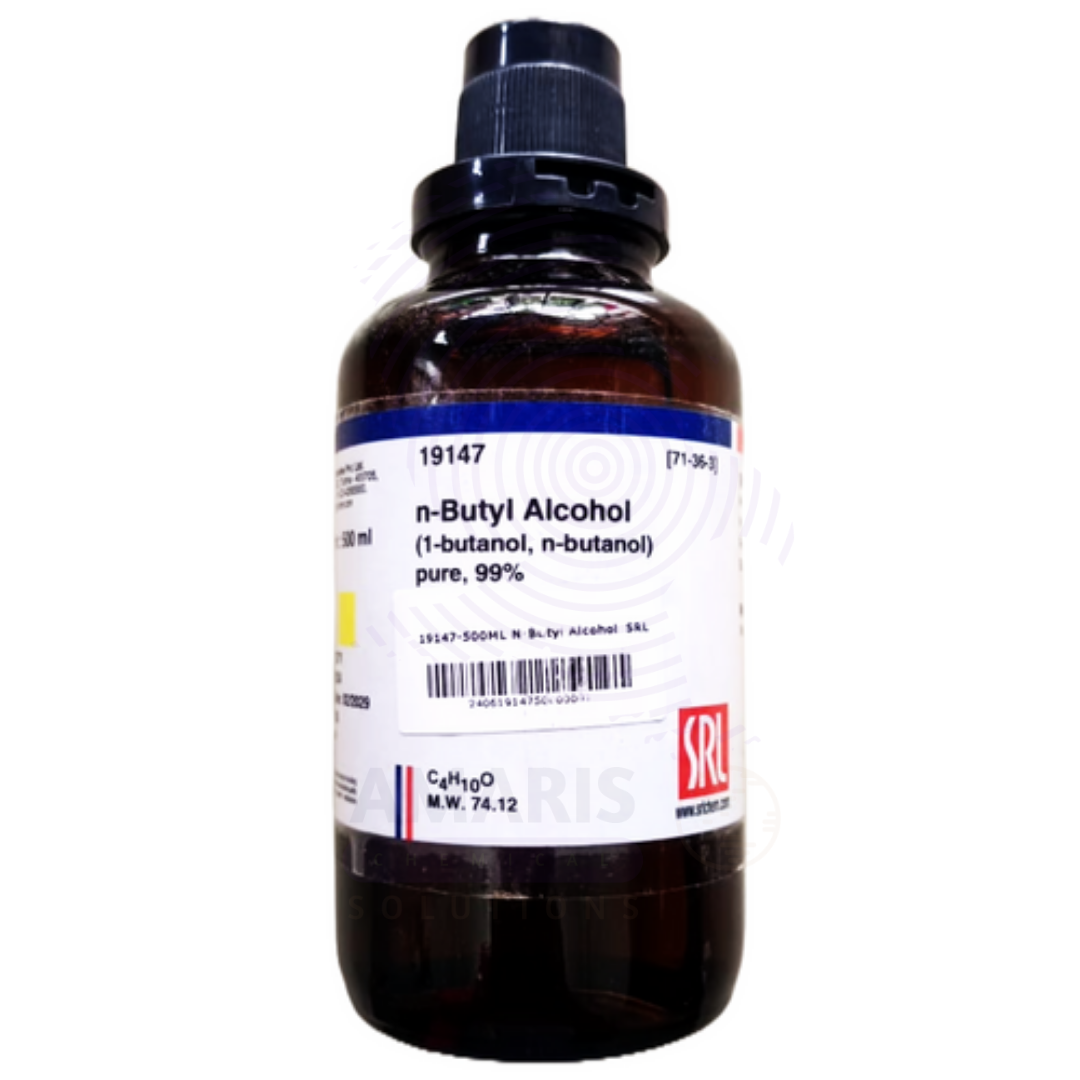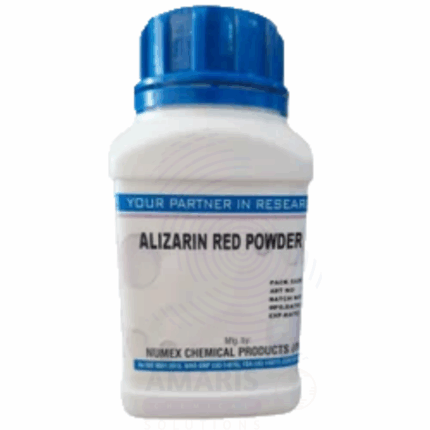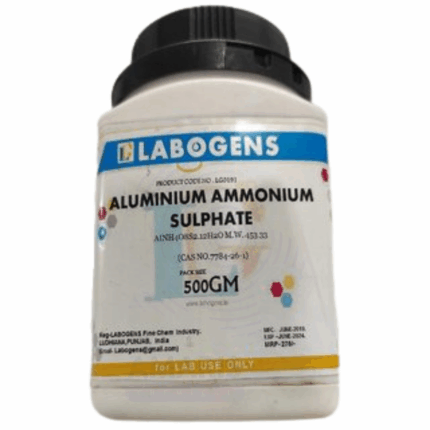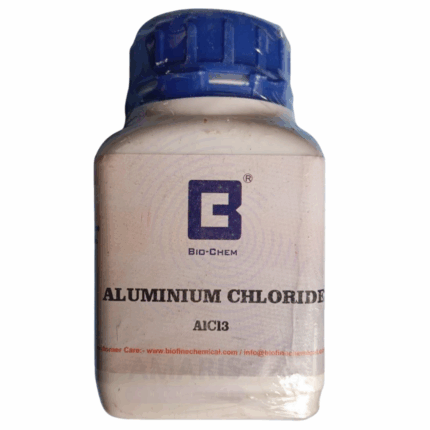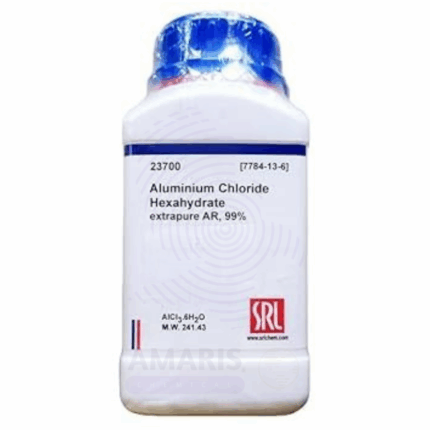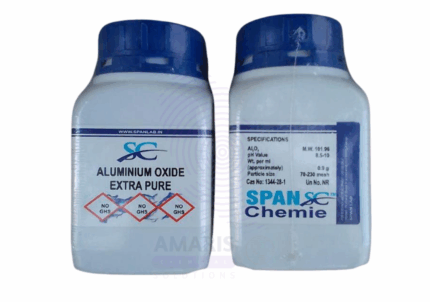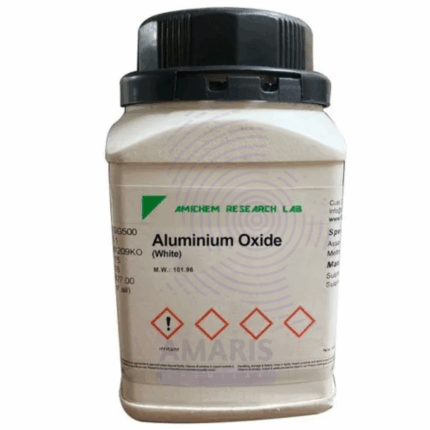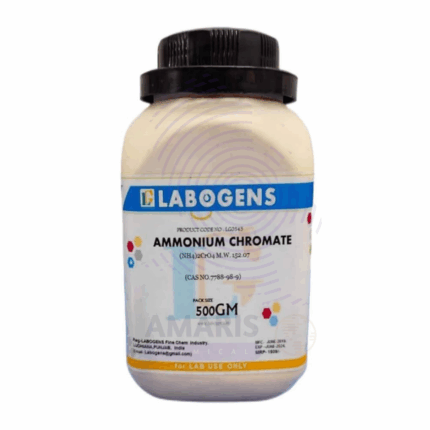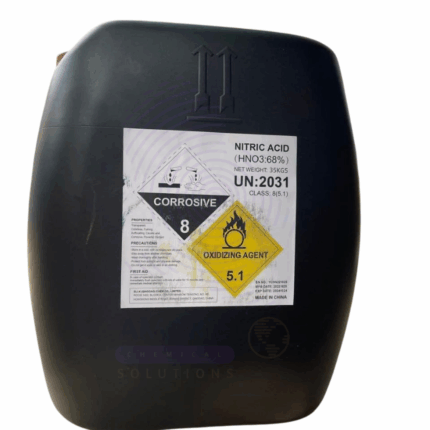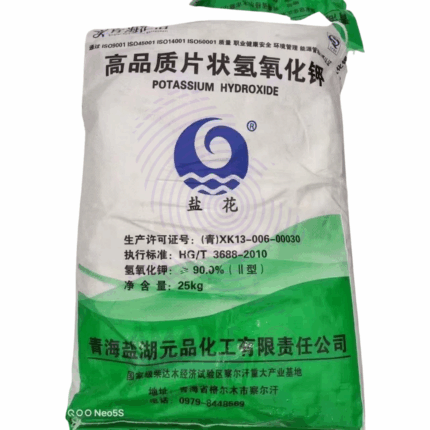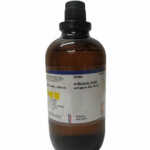
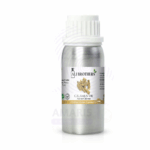
Butanol Extra Pure
$ 35.00 Original price was: $ 35.00.$ 34.76Current price is: $ 34.76.
Butanol Extra Pure is a high-purity aliphatic alcohol commonly used in laboratory environments as a solvent, reagent, and intermediate in organic synthesis. Its moderate polarity and ability to dissolve a wide range of compounds make it ideal for use in extractions, chromatography, and spectrophotometric analysis. It also serves as a starting material for producing esters, plasticizers, and pharmaceuticals. The 99.4% purity ensures minimal water and impurity content, providing reliable consistency in sensitive procedures. With a relatively low evaporation rate and good miscibility with many organic solvents, it is suitable for both preparative and analytical applications. Proper storage in a cool, ventilated area in tightly sealed containers is essential to preserve its quality and reduce volatility.
Butanol Extra Pure
Primary Uses
- Solvent in Organic Synthesis
- Acts as a moderately polar solvent for reactions involving esters, alkaloids, lipids, and polymers.
- Useful in Grignard reactions, esterifications, and extractions.
- Chromatography Solvent
- Employed in thin-layer chromatography (TLC) and paper chromatography—especially as a component of mobile phases for separating amino acids or plant pigments.
- Recrystallization and Purification
- Used as a solvent for recrystallizing certain organic compounds, where water miscibility needs to be limited.
- Intermediate in Ester Formation
- Reacts with acids (e.g., acetic acid) to form butyl esters, useful for lab studies on esterification kinetics or odor/flavor compounds.
Secondary Uses
- Alcohol Functional Group Study
- Serves as a model primary alcohol in functional group tests and qualitative analysis (Lucas test, oxidation reactions, etc.).
- Spectroscopy Practice
- Used in IR and NMR to demonstrate spectral features of hydroxyl-containing compounds and C–H stretches in alcohols.
- Microbiology (as a Control or Solvent)
- Occasionally used to dissolve or deliver hydrophobic antimicrobial agents or serve as a volatile control substance in microbial assays.
| PACK SIZE |
2.5 Litres Glass bottle |
|---|
1. Basic Identification Attributes
- Chemical Name: n-Butanol
- CAS Number: 71-36-3
- HS Code: 2905.13.00
- Molecular Formula: C₄H₁₀O
- Molecular Weight: 74.12 g/mol
- Synonyms: 1-Butanol, Butyl alcohol, n-Butyl alcohol
- Grade: Extra Pure (≥99.4%, suitable for laboratory and analytical use)
2. Physical & Chemical Properties
- Appearance: Clear, colorless liquid
- Odor: Characteristic alcoholic odor (mild, banana-like)
- Solubility:
- Miscible with ethanol and ether
- Slightly soluble in water (7.7 g/100 mL at 25 °C)
- Boiling Point: 117.7 °C
- Melting Point: -89.8 °C
- Density: ~0.81 g/cm³ at 20 °C
- Vapor Pressure: 6 mmHg at 25 °C
- Flash Point: 35 °C (closed cup)
- Autoignition Temp: 343 °C
- Refractive Index: 1.399 at 20 °C
3. Safety & Hazard Attributes
- GHS Classification:
- Flammable Liquid (Category 3)
- Eye Irritation (Category 2A)
- Specific Target Organ Toxicity – Single Exposure (Category 3, Narcotic Effects)
- Hazard Statements:
- H226: Flammable liquid and vapor
- H319: Causes serious eye irritation
- H336: May cause drowsiness or dizziness
- NFPA Ratings:
- Health: 1
- Flammability: 2
- Reactivity: 0
4. Storage & Handling Attributes
- Storage Conditions:
- Store tightly sealed in a flammable cabinet
- Keep in a cool, well-ventilated area away from ignition sources
- Incompatible Materials:
- Strong oxidizers, acids, and alkali metals
- Packaging: Amber glass or HDPE bottles with tight-sealing caps
- Handling Precautions:
- Use under fume hood; avoid inhalation and skin contact
- Wear gloves, lab coat, and splash goggles
5. Regulatory & Compliance Attributes
- Regulatory Status:
- Listed in TSCA, REACH, DSL, EINECS
- Transport Classification (UN Number):
- UN 1120 – Butanols
- Class 3 (Flammable liquid), Packing Group III
- Waste Disposal:
- Incinerate or dispose via authorized hazardous waste channels
- Do not pour down the drain
6. Environmental & Health Impact
- Ecotoxicity:
- Harmful to aquatic organisms in large concentrations
- Biodegradability:
- Readily biodegradable
- Bioaccumulation:
- Low potential
- Health Effects:
- Vapors may cause drowsiness
- Irritating to eyes and upper respiratory tract
SAFETY PRECAUTIONS
- Personal Protective Equipment (PPE):
- Wear chemical-resistant gloves (e.g., nitrile), splash-proof goggles, and a lab coat.
- Use with adequate ventilation — preferably under a fume hood.
- Handling:
- Avoid breathing vapors.
- Avoid contact with skin, eyes, and clothing.
- Keep away from sources of heat, sparks, and open flame.
- Storage:
- Store in a cool, dry, well-ventilated area away from incompatible substances.
- Keep containers tightly closed and clearly labeled.
- Store away from oxidizing agents, acids, and alkalis.
- Incompatibilities:
- Strong oxidizers (e.g., chromates, nitric acid), acids, and alkali metals.
FIRST AID MEASURES
- Inhalation:
- Remove the victim to fresh air.
- Seek medical attention if symptoms such as dizziness, drowsiness, or difficulty breathing occur.
- Skin Contact:
- Immediately wash with soap and water.
- Remove contaminated clothing.
- Get medical attention if irritation persists.
- Eye Contact:
- Rinse cautiously with water for at least 15 minutes.
- Remove contact lenses if present and easy to do.
- Seek medical help immediately.
- Ingestion:
- Rinse mouth.
- Do not induce vomiting.
- Get immediate medical assistance.
FIRE FIGHTING MEASURES
- Flammability:
- Flammable liquid (Flash point ~35 °C).
- Vapors can form explosive mixtures with air.
- Extinguishing Media:
- Use foam, dry chemical, CO₂, or alcohol-resistant water spray.
- Hazardous Combustion Products:
- Carbon monoxide (CO), carbon dioxide (CO₂), irritating vapors.
- Firefighting Equipment:
- Wear full protective gear and self-contained breathing apparatus (SCBA).


 Preservatives(food)
Preservatives(food) Flavor Enhancers
Flavor Enhancers Acidulants
Acidulants Sweeteners
Sweeteners Antioxidants
Antioxidants Colorants(food)
Colorants(food) Nutraceutical Ingredients (food)
Nutraceutical Ingredients (food) Nutrient Supplements
Nutrient Supplements Emulsifiers
Emulsifiers
 Collectors
Collectors Dust Suppressants
Dust Suppressants Explosives and Blasting Agents
Explosives and Blasting Agents Flocculants and Coagulants
Flocculants and Coagulants Frothers
Frothers Leaching Agents
Leaching Agents pH Modifiers
pH Modifiers Precious Metal Extraction Agents
Precious Metal Extraction Agents
 Antioxidants(plastic)
Antioxidants(plastic) Colorants (Pigments, Dyes)
Colorants (Pigments, Dyes) Fillers and Reinforcements
Fillers and Reinforcements Flame Retardants
Flame Retardants Monomers
Monomers Plasticizers
Plasticizers Polymerization Initiators
Polymerization Initiators Stabilizers (UV, Heat)
Stabilizers (UV, Heat)
 Antifoaming Agents
Antifoaming Agents Chelating Agents
Chelating Agents Coagulants and Flocculants
Coagulants and Flocculants Corrosion Inhibitors
Corrosion Inhibitors Disinfectants and Biocides
Disinfectants and Biocides Oxidizing Agents
Oxidizing Agents pH Adjusters
pH Adjusters Scale Inhibitors( water)
Scale Inhibitors( water)
 Antioxidants(cosmetic)
Antioxidants(cosmetic) Emollients
Emollients Fragrances and Essential Oils
Fragrances and Essential Oils Humectants
Humectants Preservatives
Preservatives Surfactants(cosmetic)
Surfactants(cosmetic) Thickeners
Thickeners UV Filters
UV Filters
 Fertilizers
Fertilizers Soil Conditioners
Soil Conditioners Plant Growth Regulators
Plant Growth Regulators Animal Feed Additives
Animal Feed Additives Biostimulants
Biostimulants Pesticides (Herbicides, Insecticides, Fungicides)
Pesticides (Herbicides, Insecticides, Fungicides)
 Active Pharmaceutical Ingredients (APIs)
Active Pharmaceutical Ingredients (APIs) Excipients
Excipients Solvents(pharmaceutical)
Solvents(pharmaceutical) Antibiotics
Antibiotics Antiseptics and Disinfectants
Antiseptics and Disinfectants Vaccine Adjuvants
Vaccine Adjuvants Nutraceutical Ingredients (pharmaceutical)
Nutraceutical Ingredients (pharmaceutical) Analgesics & Antipyretics
Analgesics & Antipyretics
 Analytical Reagents
Analytical Reagents Solvents(lab)
Solvents(lab) Chromatography Chemicals
Chromatography Chemicals Spectroscopy Reagents
Spectroscopy Reagents microbiology-and-cell-culture-reagents
microbiology-and-cell-culture-reagents Molecular Biology Reagents
Molecular Biology Reagents Biochemical Reagents
Biochemical Reagents Inorganic and Organic Standards
Inorganic and Organic Standards Laboratory Safety Chemicals
Laboratory Safety Chemicals Specialty Laboratory Chemicals(Special Laboratory Equipment)
Specialty Laboratory Chemicals(Special Laboratory Equipment)
 Demulsifiers
Demulsifiers Hydraulic Fracturing Fluids
Hydraulic Fracturing Fluids Scale Inhibitors(oil)
Scale Inhibitors(oil) Surfactants(oil)
Surfactants(oil) Drilling Fluids
Drilling Fluids
 Dyes and Pigments
Dyes and Pigments Bleaching Agents
Bleaching Agents Softening Agents
Softening Agents Finishing Agents
Finishing Agents Antistatic Agents
Antistatic Agents
 Admixtures
Admixtures Waterproofing Agents
Waterproofing Agents Sealants and Adhesives
Sealants and Adhesives Curing Compounds
Curing Compounds Concrete Repair Chemicals
Concrete Repair Chemicals Anti-Corrosion Coatings
Anti-Corrosion Coatings
 Surfactants(cleaning)
Surfactants(cleaning) Builders
Builders Enzymes
Enzymes Solvents (Cleaning)
Solvents (Cleaning) Fragrances
Fragrances
 Electronic Chemicals
Electronic Chemicals Catalysts
Catalysts Lubricants
Lubricants Photographic Chemicals
Photographic Chemicals Refrigerants
Refrigerants Automotive chemicals
Automotive chemicals Pyrotechnic Chemicals
Pyrotechnic Chemicals
 Biodegradable Surfactants
Biodegradable Surfactants Bio-based Solvents
Bio-based Solvents Renewable Polymers
Renewable Polymers Carbon Capture Chemicals
Carbon Capture Chemicals Wastewater Treatment Chemicals
Wastewater Treatment Chemicals
 Pigments
Pigments Solvents(paint)
Solvents(paint) Specialty Coatings
Specialty Coatings Binders/Resins
Binders/Resins Additives
Additives Driers
Driers Anti-Corrosion Agents
Anti-Corrosion Agents Functional Coatings
Functional Coatings Application-Specific Coatings
Application-Specific Coatings
 Fresh Herbs
Fresh Herbs Ground Spices
Ground Spices Whole Spices
Whole Spices Spice Blends
Spice Blends Dried Herbs
Dried Herbs
 Leavening Agents
Leavening Agents Dough Conditioners
Dough Conditioners Flour Treatments
Flour Treatments Fat Replacers
Fat Replacers Decoratives
Decoratives Preservatives(baking)
Preservatives(baking)
 Plasticizers & Softeners
Plasticizers & Softeners Reinforcing Agents
Reinforcing Agents Adhesion Promoters
Adhesion Promoters Vulcanizing Agents
Vulcanizing Agents Antidegradants
Antidegradants Blowing Agents
Blowing Agents Fillers & Extenders
Fillers & Extenders Accelerators & Retarders
Accelerators & Retarders